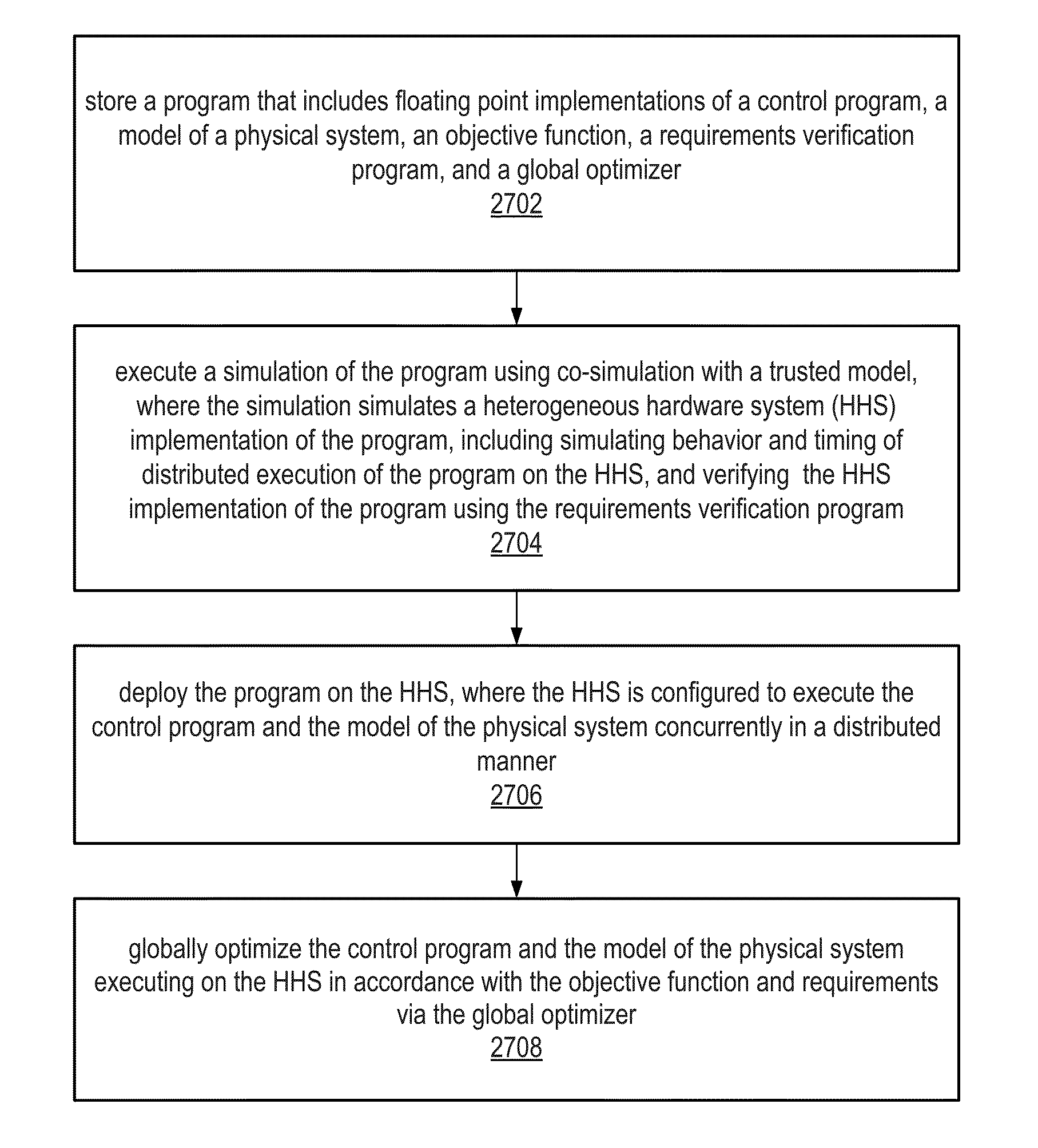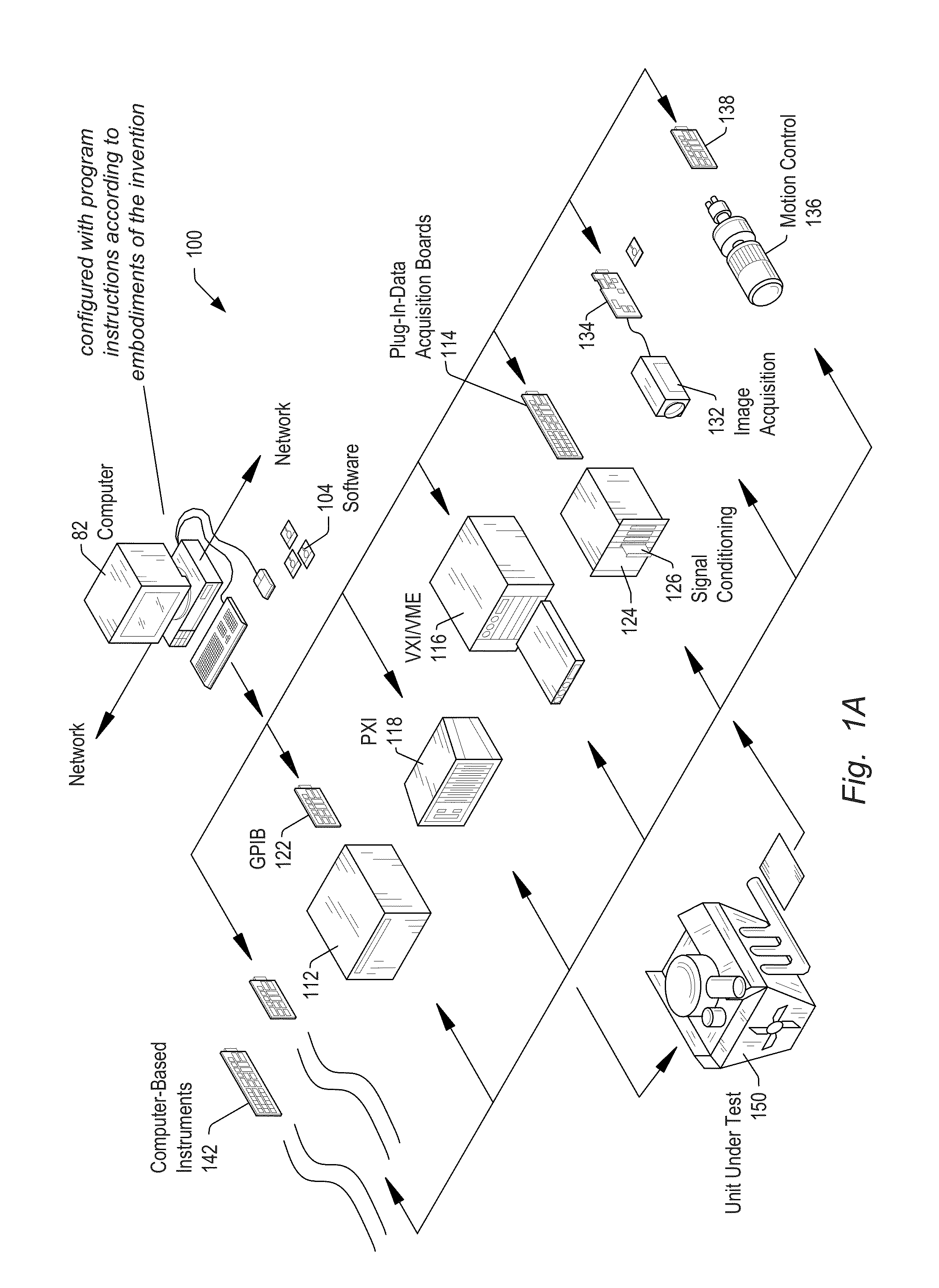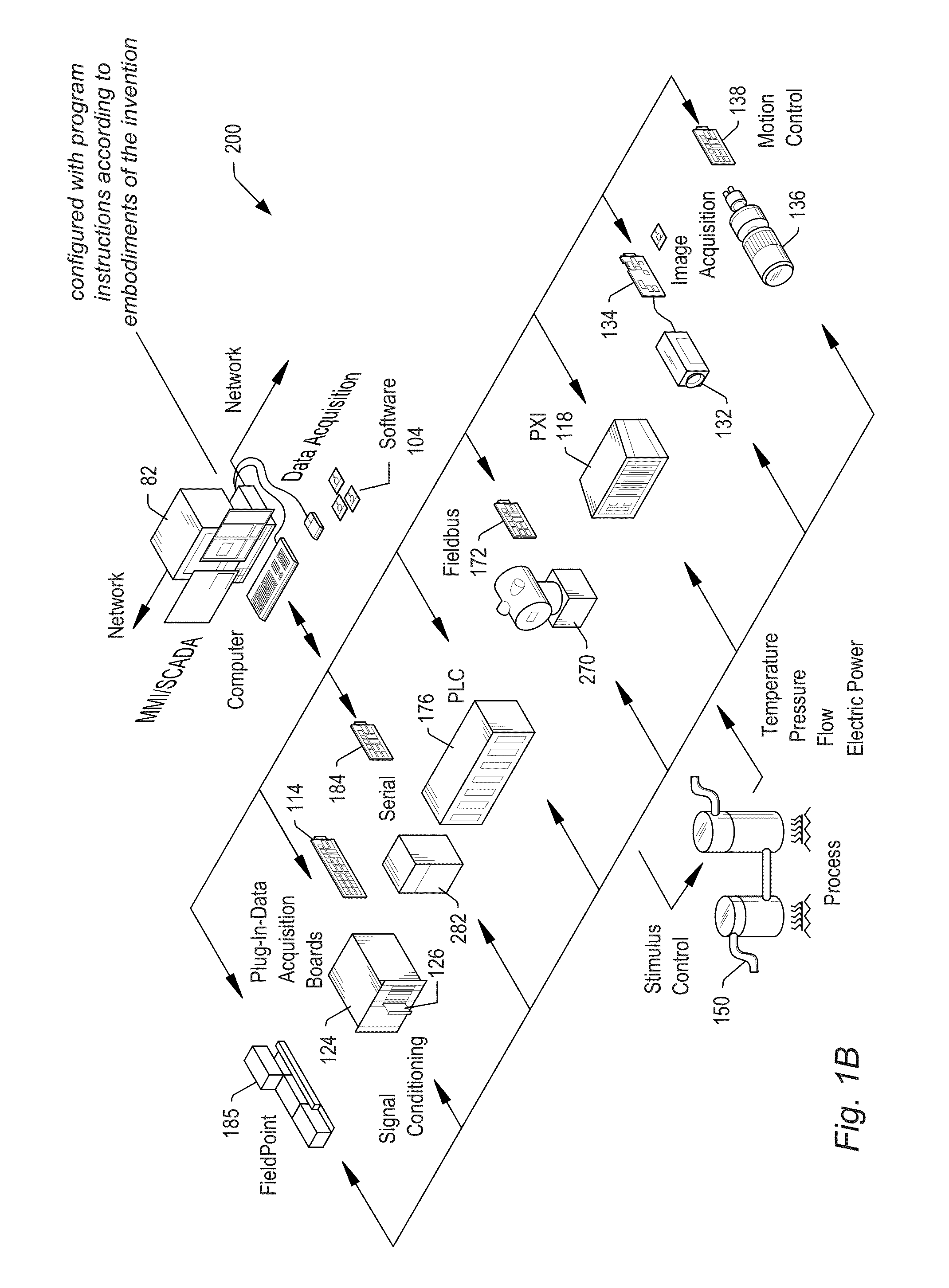Global Optimization and Verification of Cyber-Physical Systems Using Floating Point Math Functionality on a System with Heterogeneous Hardware Components
a cyber-physical system and hardware component technology, applied in the field of programming, can solve the problems of insufficient technical knowledge of techniques, user programming skills and ability to interact with the computer system, and limiting factors in the achievement of optimal utilization of the computer system
- Summary
- Abstract
- Description
- Claims
- Application Information
AI Technical Summary
Benefits of technology
Problems solved by technology
Method used
Image
Examples
Embodiment Construction
Incorporation by Reference
[0061]The following references are hereby incorporated by reference in their entirety as though fully and completely set forth herein:
[0062]U.S. Provisional Application 62 / 067,947, titled “Global Optimization and Verification of Cyber-Physical Systems Using Floating Point Math Functionality on a System with Heterogeneous Hardware Components”, filed Oct. 23, 2014.
[0063]U.S. application Ser. No. 14 / 063,049, titled “Development and Deployment of Parallel Floating-Point Math Functionality on a System with Heterogeneous Hardware Components”, filed Oct. 25, 2013.
[0064]U.S. patent application Ser. No. 13 / 347,880, titled “Co-Simulation with Peer Negotiated Time Steps”, filed Jan. 11, 2012.
[0065]U.S. patent application Ser. No. 12 / 752,606, titled “Race Structure for a Graphical Program”, filed Apr. 1, 2010.
[0066]U.S. patent application Ser. No. 12 / 577,284, titled “Asynchronous Preemptive Edit Time Semantic Analysis of a Graphical Program”, filed Oct. 12, 2009.
[0067]...
PUM
 Login to View More
Login to View More Abstract
Description
Claims
Application Information
 Login to View More
Login to View More - R&D
- Intellectual Property
- Life Sciences
- Materials
- Tech Scout
- Unparalleled Data Quality
- Higher Quality Content
- 60% Fewer Hallucinations
Browse by: Latest US Patents, China's latest patents, Technical Efficacy Thesaurus, Application Domain, Technology Topic, Popular Technical Reports.
© 2025 PatSnap. All rights reserved.Legal|Privacy policy|Modern Slavery Act Transparency Statement|Sitemap|About US| Contact US: help@patsnap.com



